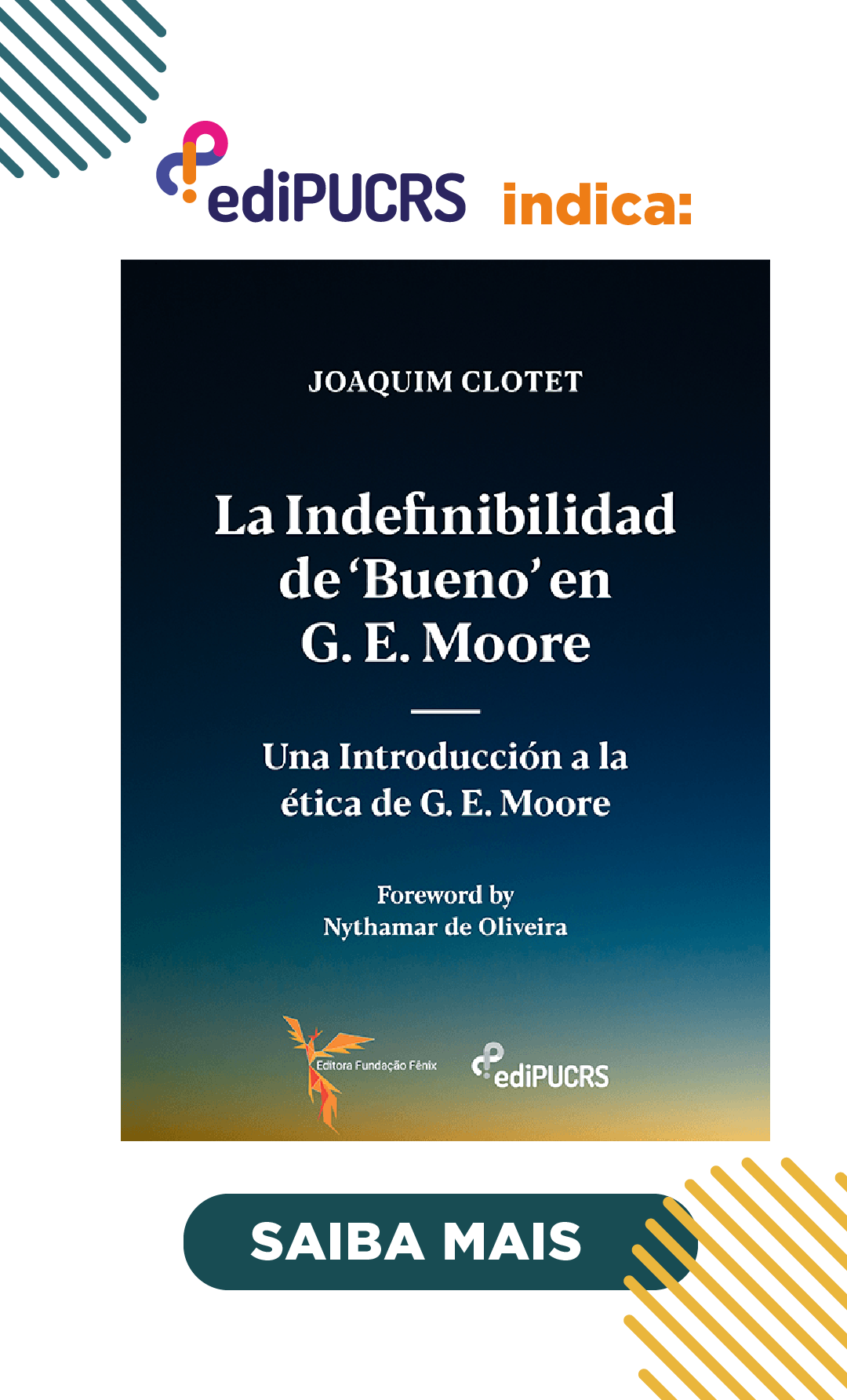Revisiting the Mind-Brain Reductionisms: Contra Dualism and Eliminativism
DOI:
https://doi.org/10.15448/1984-6746.2016.2.24536Palabras clave:
Dualism. Eliminativism. Moral Beliefs. Naturalism. Normativity. Reductionism.Resumen
In this paper, I should like to argue against both eliminative materialism and substance/property dualism, aiming more specifically at the reductionist arguments offered by the Churchlands’ and Swinburne’s versions thereof, insofar as they undermine moral beliefs qua first-personish accounts dismissed as folk psychology by the former, as the latter regards them as supervening on natural events extendedly, that is, necessarily both ways of the biconditional linking mental and physical substances (for every A-substance x there is a B-substance y, such that necessarily if y exists x exists).
Descargas
Citas
CHALMERS, David. Facing up to the hard problem of consciousness. Journal of Consciousness Studies, 2 (1995), p. 200-219.
______. The Conscious Mind, Oxford University Press, 1996.
CHURCHLAND, Patricia S. Neurophilosophy: Toward A Unified Science of the Mind- Brain. Bradford Books. Cambridge, MA: MIT Press. 1986.
CHURCHLAND, Paul M. Matter and Consciousness. Cambridge, MA: Bradford Books, MIT Press, 1984.
______. The Engine of Reason, The Seat of the Soul: A Philosophical Journey into the Brain. Cambridge: MIT Press, 1994.
DAMASIO, Antonio. The feeling of what happens: Body and emotion in the making of consciousness. New York: Harcourt Brace, 1999.
______. Looking for Spinoza: Joy, sorrow and the feeling brain. New York: Harcourt, Inc., 2003.
______. (1994). Descartes’ Error: Emotion, reason, and the human brain. New York: Penguin, 2005.
______. Self Comes to Mind: Constructing the conscious brain. New York: Pantheon Books, 2010.
DUNBAR, Robin I. M. The Social Brain Hypothesis. Evolutionary Anthropology: Issues, News, and Reviews, 6, 5 (1998), p. 178-190. DOI: https://doi.org/10.1002/(SICI)1520-6505(1998)6:5<178::AID-EVAN5>3.0.CO;2-8
GAZZANIGA, Michael. The social brain. New York: Basic Books, 1985.
______. The Ethical Brain. New York: Dana Press, 2005.
GIORDANO, James; Gordijn, Bert (Eds.). Scientific and Philosophical Perspectives in Neuroethics. Cambridge University Press, 2010. DOI: https://doi.org/10.1017/CBO9780511676505
GLASGOW, Joshua. A Theory of Race. New York: Routledge, 2009. DOI: https://doi.org/10.4324/9780203880951
GODFREY-SMITH, Peter. Complexity and the Function of Mind in Nature. Cambridge University Press, 1998.
HABERMAS, Jürgen. Communication and the Evolution of Society. Trans.
T. McCarthy. Boston: Beacon, 1979.
HORGAN, Terence. “Metaphysical Realism and Psychologistic Semantics,” Erkenntnis, 34, 3 (1991), p. 297-322. DOI: https://doi.org/10.1007/BF00172517
HORGAN, Terry; Timmons, Mark. “Metaphysical Naturalism, Semantic Normativity, and Meta-Semantic Irrealism”. Philosophical Issues 4/18: Naturalism and Normativity, (1993), p. 180-204. DOI: https://doi.org/10.2307/1522840
HORNSBY, Jennifer. Simple Mindedness: In Defense of Naive Naturalism in the Philosophy of Mind. Cambridge, MAS: Harvard University Press, 1997.
KANT, Immanuel. (1781). Kritik der reinen Vernunft. Frankfurt: Surhkamp, 1987.
KORSGAARD, Christine M. “Reflections on the Evolution of Morality”. The Amherst Lecture in Philosophy [Amherst College Press], 5 (2010), p. 1-29.
MILLIKAN, Ruth G. Language: A Biological Model. Oxford University Press, 2005. DOI: https://doi.org/10.1093/0199284768.001.0001
PRINZ, Jesse. Furnishing the Mind: Concepts and Their Perceptual Basis. MIT Press, 2002. DOI: https://doi.org/10.7551/mitpress/3169.001.0001
______. The Emotional Construction of Morals. Oxford University Press, 2004b.
______. The Conscious Brain. Oxford University Press, 2012.
SEARLE John. Can Computers Think? In: Minds, Brains and Science. Reith Lectures. Cambridge, Mass.: Harvard University Press, 1984.
______. The Construction of Social Reality. New York: Free Press, 1995.
SWINBURNE, Richard. (1986). The Evolution of the Soul. 2nd revised edition. Oxford University Press, 1997.
______. Mind, Brain, and Free Will. Oxford University Press, 2013.
______. Gut Reactions: A Perceptual Theory of Emotion. Oxford U Press, 2004a.
Descargas
Publicado
Cómo citar
Número
Sección
Licencia
Derechos de Autor
La sumisión de originales para la Revista Veritas implica la transferencia, por los autores, de los derechos de publicación. El copyright de los artículos de esta revista es el autor, junto con los derechos de la revista a la primera publicación. Los autores sólo podrán utilizar los mismos resultados en otras publicaciones indicando claramente a Revista Veritas como el medio de la publicación original.
Creative Commons License
Excepto donde especificado de modo diferente, se aplican a la materia publicada en este periódico los términos de una licencia Creative Commons Atribución 4.0 Internacional, que permite el uso irrestricto, la distribución y la reproducción en cualquier medio siempre y cuando la publicación original sea correctamente citada. Copyright: © 2006-2020 EDIPUCRS





